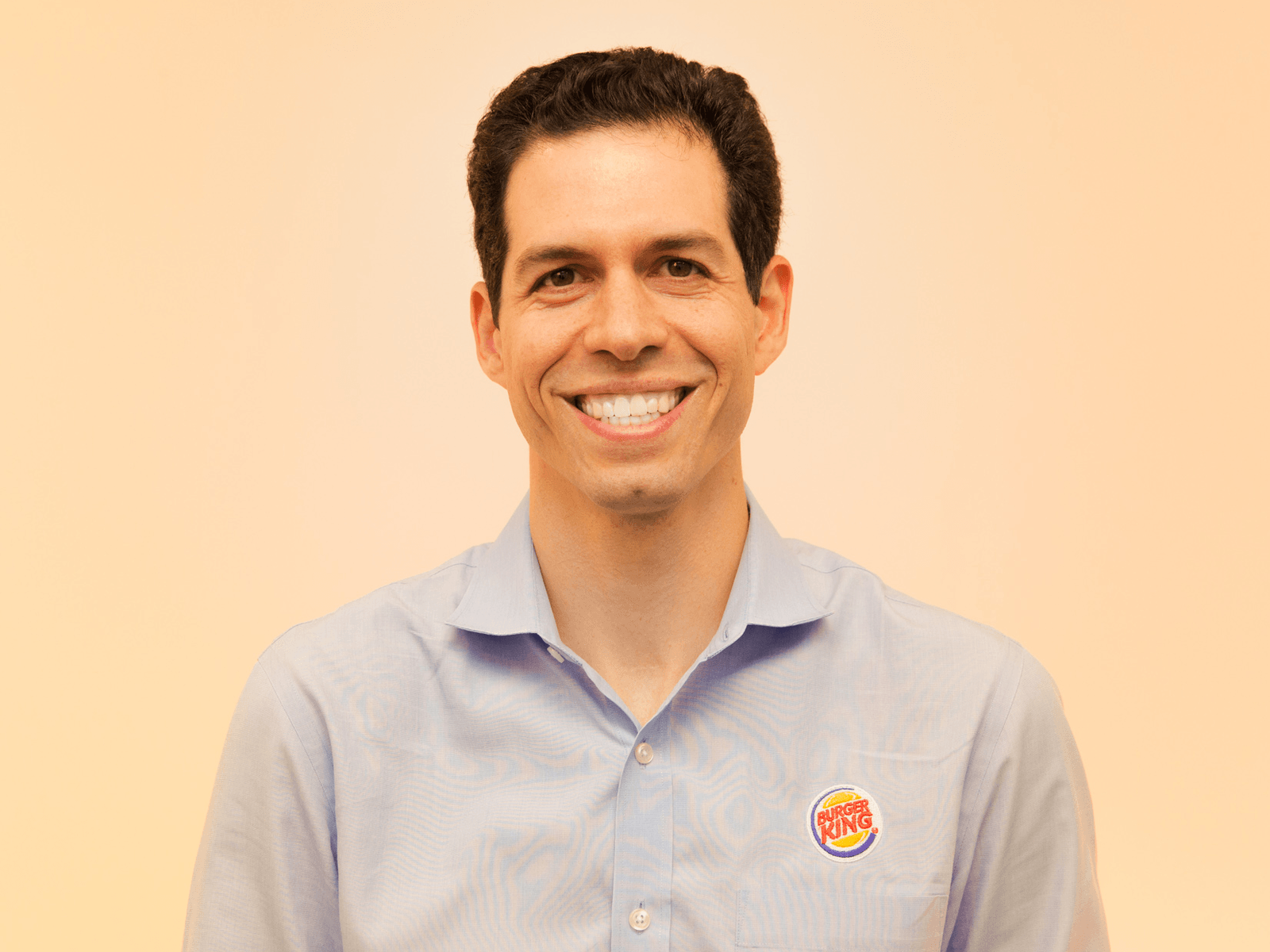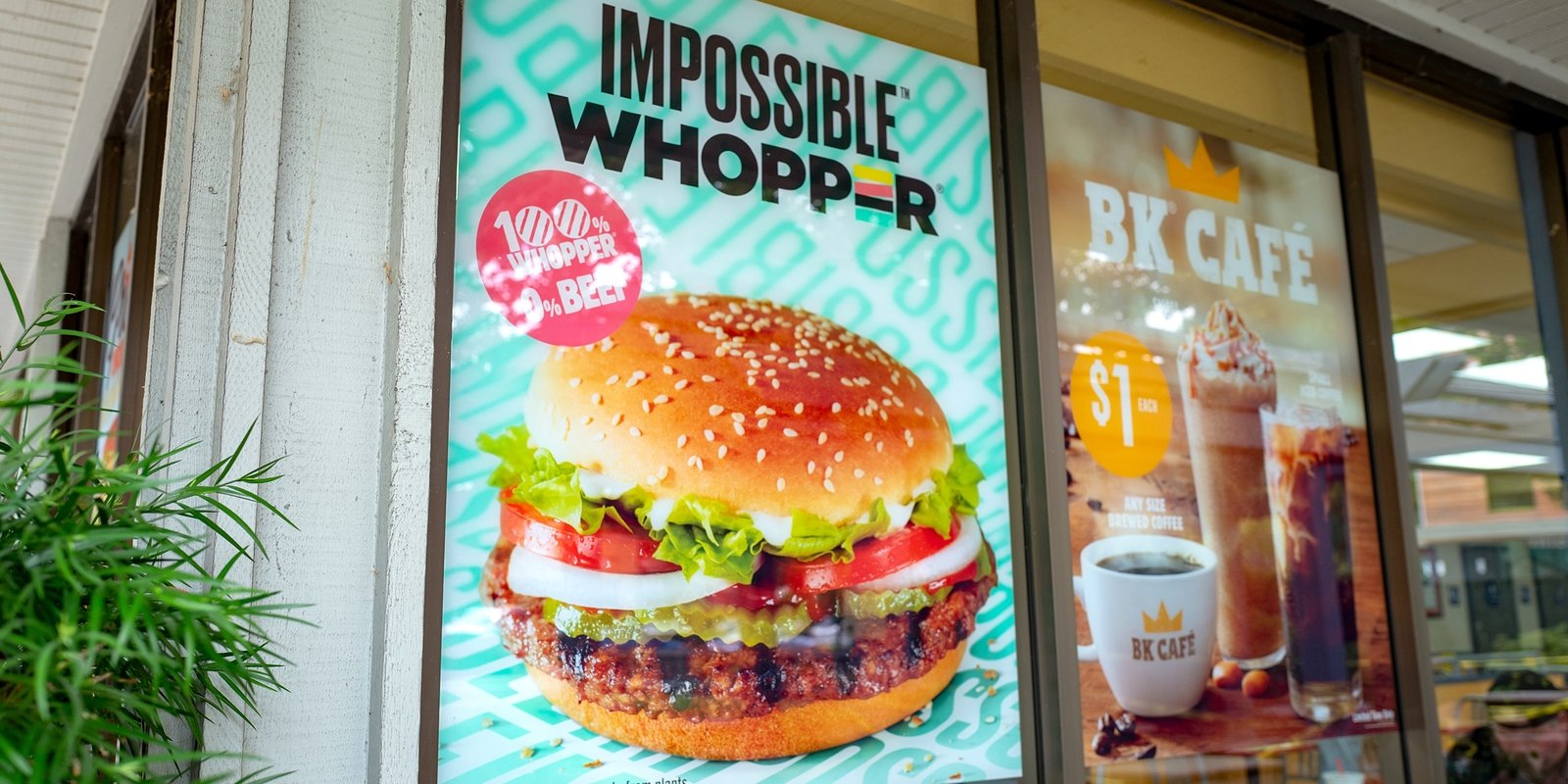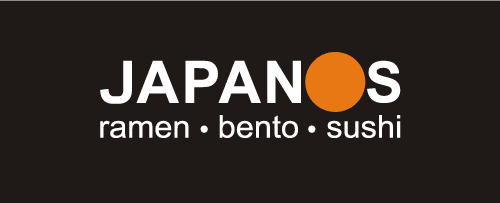The fight to be King
History shows us that complacency can sink companies – fast. Burger King might seem like an invincible brand, but the buns were turning stale on the American fast-food chain. That was - until a few years ago.
The re-popularisation of the company came after high-performing 2018 fiscal year, when Burger King’s revenue jumped 17 percent during the 12-month period - even outperforming fast-food kingpins, McDonald's. What started this revenue revolution? Well, this can be attributed to a single individual, Mr Daniel Schwartz.
Schwartz was a high-flying corporate businessman who at the young age of 29 decided to take on a new challenge. He became Burger King’s CFO in 2011 – swapping his tailor-made suit for an apron, flipping burgers and sweeping floors. That’s not all he swept up either. Schwartz got his hands dirty to clean up the entire flame-grilled empire, brushing costs from the head office personnel to stationary cupboards. He even flipped out the company’s private jet for commercial flying. There’s no surprise that with his energy and success, three years into the role he was named CEO. His mission: “Make Burger King cool again.”
Since then, Schwartz has set his eyes on growing the company by closing stores. Yes, that wasn’t a mistype - closing stores! According to Restaurant Business, Burger King have been closing between 200-250 low-volume locations per year, and replacing them with high-tech new restaurants that fit the “Burger King of Tomorrow” image. President of Burger King in the Americas, Chris Finazzo, claims that, "Closing low-volume restaurants creates a virtual cycle of improved profitability." These new restaurants generate an extra 50% in revenue per store on average. Meanwhile, under Schwartz’s direction, over 60% of existing stores have already undergone renovation. This is part of a long-term vision to boost the company’s image and close the gap between BK and McDonald’s.
Furthermore, in Schwartz’s plan to make Burger King cool again, the second biggest burger chain in the world underwent its first rebranding in more than two decades. The fresh look is a nod to the brand heritage with a throwback to the classic logo and colours. Schwartz also streamlined the menu; while the company, late last year, publicly announced they have removed all artificial colours, flavours and preservatives from their most popular item, the Whopper, in a bid to match what the consumers of tomorrow want.
BK is heavily invested in creating a high-tech experience, in order to keep up with industry leaders. The company are reinventing the drive-through experience to two-lanes, with digital menu boards with mobile app integration. In store, there’s to be an increase of self-serve kiosks. Sounds familiar, right? You might have already encountered one of these during a late-night food grab at McDonald’s.
Burger King first entered the European market back in the mid 1970’s. It’s popularity and growth in the region have been steady, although franchises weren’t taken up in every country or region of the continent. Since the successful recent change in BK management, new belief has seen BK enter into new territories, or even re-enter markets in Europe. For example, Burger King has this year re-emerged in the Ukraine after being dormant for 15 years.
Burger King has been operating in the greater Balkan region for several years. Stores can be found in Hungary, Croatia, North Macedonia, Bulgaria and Romania. However, the recent uptick has seen a string of stores open in totally unchartered countries. It started with a store in Kosovo in 2018, which was quickly followed by several more the following year. 2019 also saw 2 stores emerge in both Albania and Greece. Serbia is the most recent, opening its first stores this year. This seals off the region and is a massive boost to the European BK network.
Over the last two years, a regional drive was also seen in the Baltic region. After witnessing a successful launch of BK in Finland in 2013, the Tallink Grupp bought the rights to franchise Burger King in the Baltic states. The iconic shipping company have now opened a total of 10 restaurants in the region across Estonia, Latvia and Lithuania - two of which actually operate inside their popular passenger cruise liners running between the ports of Tallin and Helsinki. Three of the new restaurants actually had their grand opening via Zoom, as they were in the middle of lockdown.
Katre Kõvask, Head of Food & Beverage at Tallink Grupp, said during a statement in June, “The launch of the 10th Burger King restaurant in the Baltics in slightly more than one year and in the challenging conditions, due to the pandemic and various restrictions, gives us real cause for celebration as it has not been an easy task.”
“We have worked hard to bring the ultimate flame-grilled taste experiences to our customers in the three Baltic states, offering them an opportunity to escape from the every-day and try something new in these challenging times and burger fans have welcomed this opportunity with open arms. We are pleased Burger King restaurants have received such a warm welcome in all three countries,” Ms Kõvask said.
It’s not all been good times of late for the fast-food giants. On the other side of the world, Burger King struggled to stay afloat during the pandemic. New Zealand Burger King franchise owners, Tango Finance, Tango NZ and Antares NZ were put into receivership after an underperforming period during the global crisis, owing more than NZD $65 million. This problem for Burger King was seemingly self-rectified in no time at all. The owners of Starbucks New Zealand, Tahua Partners, bought the Antares Restaurant Group, who ran the Kiwi outlets at the end of 2020. Some might say it’s a lucky save for the brand who have 78 restaurants in New Zealand, employing thousands of people across the country.
If there’s one thing that Burger King’s recent history has shown, put a Whopper into the right hands and the potential is limitless. Today, Burger King has built a network of almost 19 thousand restaurants worldwide – most of which are franchised. BK currently sits at number 3 on the top franchise list behind McDonald’s and KFC. The Burger King CEO’s wild mission to close the gap with their number one competitor is a long way away yet, but confidence in the brand and the results are showing that it’s not impossible.
 A fresh face and fresh ideas / "I believe in MWA - management by walking around - so I spend as much time as possible traveling and visiting franchise partners. You only learn by walking around and meeting people," says the Burger King CEO, Daniel Schwartz.
A fresh face and fresh ideas / "I believe in MWA - management by walking around - so I spend as much time as possible traveling and visiting franchise partners. You only learn by walking around and meeting people," says the Burger King CEO, Daniel Schwartz. read articles
 Join the Future of QSR with Koykan
/2025-11-30
Join the Future of QSR with Koykan
/2025-11-30
Koykan is a dynamic, technology-driven Quick Service Restaurant (QSR) chain that is redefining the fast-casual dining landscape. - says Marko Gnjidic, Koykan Franchise Director
A fast-growing brand with a focused menu and strong identity, Dave’s Hot Chicken is reshaping the fast-casual chicken segment worldwide.
A modern and profitable self-service coffee concept designed for entrepreneurs who value efficiency, quality, and scalability.
Gordon Ramsay Restaurants expands its global franchise network, offering investors a premium dining brand with strong operational support.
Dogu redefines the hot dog experience with bold recipes, efficient operations and a proven franchise system designed for profitable growth.
most read
 Profitable franchise in the self-service laundry industry
/2025-01-31
Profitable franchise in the self-service laundry industry
/2025-01-31
Speed Queen offers a profitable, low-maintenance franchise in the growing self-service laundry industry, with strong brand support and no royalty fees.
Franchising in Europe is booming—discover which sectors lead growth through data, key markets, and standout brands.
With more than 50 years in the business, Intermarché is a truly European retail superpower.
Want to run a profitable business with a strong brand behind you? Explore the benefits and requirements of grocery store franchises in Europe.
Franchising has revolutionized global business by enabling rapid expansion with a proven business model. Discover the largest franchise networks shaping industries worldwide.







